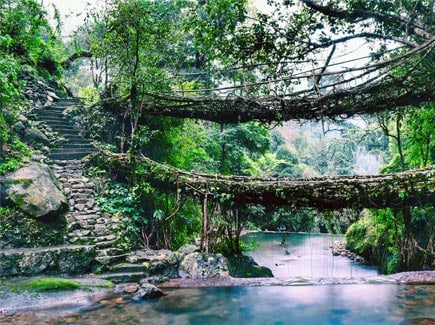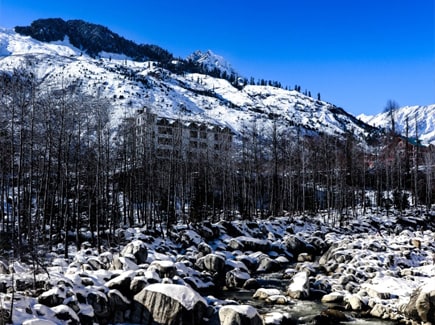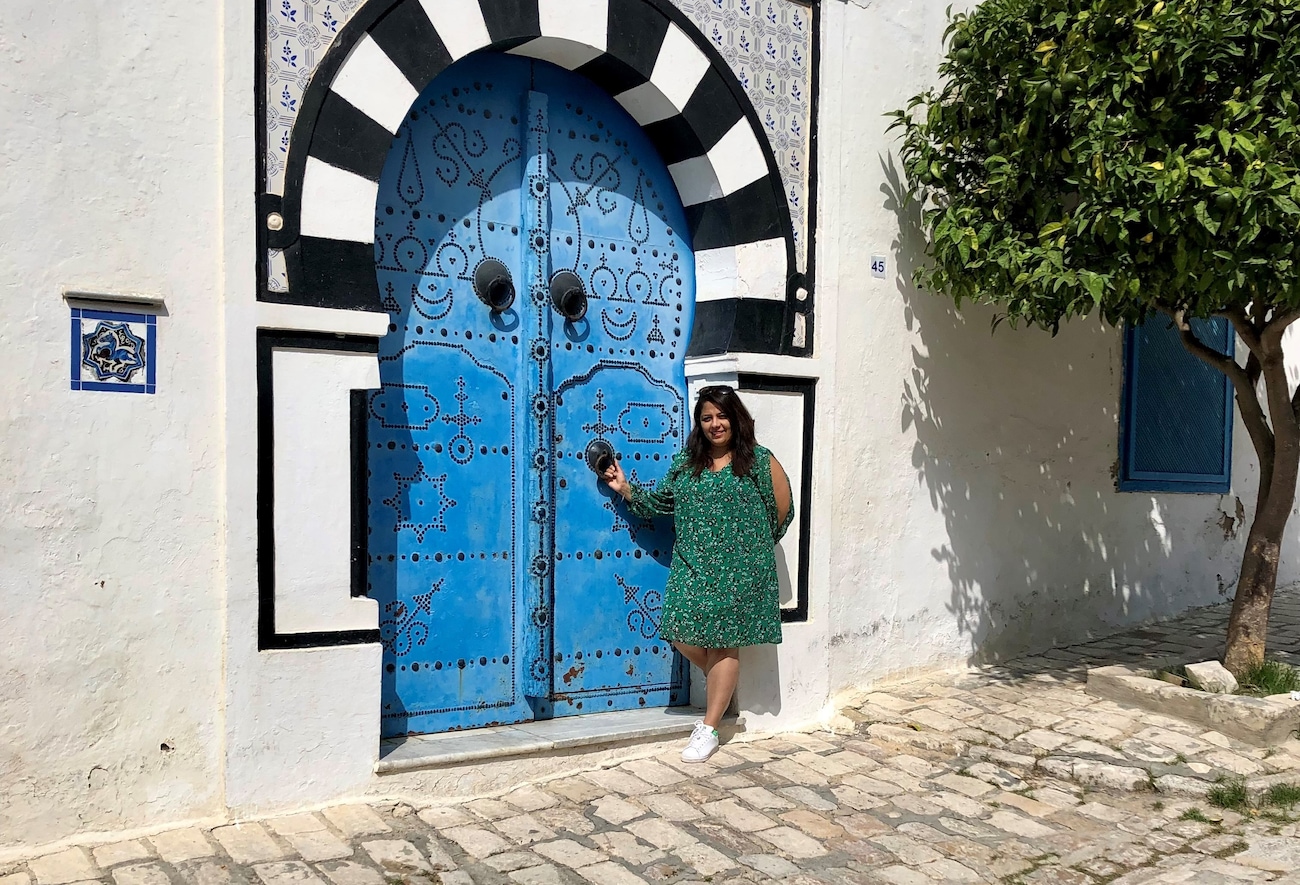Published in the Saturday Navbharat Times on 04 May, 2024
As I wandered through the lanes of the Medina, it felt like stepping into a fairytale. Every shop brimmed with carpets, rugs, lamps, brassware, ceramics, leather items, and handbags—an eclectic mix of trinkets, jewelry, and beautiful goods. I found myself stopping at nearly every stall, realizing my visit would extend far longer than expected. After all, I was at a UNESCO World Heritage site—the Medina of Tunis, the capital city of Tunisia. With no rush in mind, I decided to explore this captivating city one step at a time.
The shops alternated with quaint cafes where tourists and locals sat sipping on refreshing mint tea. I soon learned that the most common type of tea consumed in Tunisia is "nana" or mint tea, made from green tea leaves steeped with fresh mint leaves and sweetened with sugar. This refreshing and aromatic tea is enjoyed throughout the day, often served in small glasses alongside nuts, dried fruits, or pastries. Seeking the perfect spot for enjoying my tea, I stumbled upon a small hole-in-the-wall tea house and ascended its stairs to find one of the most colorful rooftop terraces! Decorated with ceramics and vibrant furniture, the rooftops of the Medina are one of Tunis’s well-kept secrets.
When I decided to visit Tunisia, many questioned my choice. For me, Tunisia represented the allure of a new country, a new exciting destination, and the opportunity to reach the milestone of having visited 100 countries. Tunisia offered a mix of culture, history, diverse landscapes—from beaches to deserts, pretty villages to beautiful cities—and good food. There is something undeniably thrilling about exploring an unknown destination for the first time!
But why Tunisia, you may ask? For me, Tunisia is where the Mediterranean Sea meets Africa! Africa itself is incredibly diverse, from rainforests to deserts, savannahs to mountains, and coastlines. Located in North Africa, Tunisia sits on the Mediterranean coast, bordered by Algeria to the west and Libya to the southeast. As a member of the Maghreb countries, which include Morocco, Algeria, Libya, and Mauritania, Tunisia is also the land of the Berbers. The Berbers, also known as Amazigh, are an indigenous ethnic group native to North Africa, including Tunisia. With a rich and diverse cultural heritage, the Berbers have inhabited the region for thousands of years, leaving a lasting imprint on Tunisia's history, language, and traditions. Known for their resilience and adaptability, the Berbers have preserved their unique customs and languages despite centuries of influence from various conquerors and civilizations.
Here, they maintain traditional lifestyles, practicing agriculture, herding, and crafts passed down through generations. Berber villages, characterized by their distinctive architecture and terraced landscapes, offer a glimpse into a way of life deeply rooted in harmony with nature and community. Berber traditions, such as music, dance, and festivals, continue to thrive, serving as a vibrant expression of the Berber heritage.
I often feel that history meanders through time, reshaping the geography and architecture of the place. Tunisia’s strategic location has historically made it a crossroads of civilizations, with influences from Europe, Africa, and the Middle East shaping its culture, cuisine, and architecture. The Arabs, Phoenicians, Romans, Turkish Ottomans, and the French have all left their mark on this beautiful country. Tunisia's diverse landscapes range from sandy beaches along the coastline to fertile plains in the north and the rugged Atlas Mountains in the interior.
After my mint tea in the Medina, I indulged in Tunisia's culinary delights, including the sweet and refreshing cactus fruit offered by a friendly local vendor who had kept it chilled in ice. My next stop was the Bardo Museum. Housed in a former palace dating back to the 19th century, the museum boasts an extensive collection of over 100,000 artifacts, including magnificent Roman mosaics, exquisite jewelry, and intricate ceramics.
The city of Tunis bears a striking resemblance to Paris; at Avenue de France, you could easily be forgiven for thinking you were in the French capital! The wide boulevards lined with elegant buildings and bustling cafes evoke a sense of French familiarity, yet with a unique Tunisian twist.
From Tunis, I ventured to the picturesque village of Sidi Bou Said, perched high atop a cliff overlooking the Mediterranean Sea. The whitewashed buildings adorned with blue doors and shutters create a striking contrast against the azure sky, reminiscent of the iconic landscapes of Santorini. Legend has it that the village was named after a Muslim saint, Sidi Bou Said, who is said to have lived in the area during the 12th century. Here, the doors are most often painted a vivid blue to represent the sky and symbolize good fortune. The house doors reflect the luck and happiness of the inhabitants.
As I watched the sun dip below the horizon, painting the sky in hues of pink and gold, I couldn't help but feel a sense of peace and tranquility wash over me. The jasmine flowers adorning the streets filled the air with their intoxicating fragrance, adding to the enchanting ambiance of this charming village. Jasmine is the national flower of Tunisia, cherished as a symbol of the nation's identity. During the Tunisian Revolution, also known as the Jasmine Revolution, jasmine became a powerful symbol of hope, freedom, and change. Protesters carried jasmine flowers and adorned themselves with jasmine garlands as they demanded political reform and an end to corruption and authoritarian rule.
Continuing my journey, I made my way to Hammamet, a coastal resort town known for its pristine beaches and azure waters. The sandy shores stretched as far as the eye could see, beckoning me to relax and unwind amidst the natural beauty of the Mediterranean coast.
No visit to Tunisia would be complete without a trip to Carthage, the ancient city that once served as a powerful center of trade and culture in the Mediterranean. It was here that I learned about the Carthaginians, a civilization that flourished in the region thousands of years ago. Legend has it that Carthage was founded by Queen Dido, a legendary figure in Phoenician mythology, who fled her homeland in search of a new kingdom. Queen Dido, daughter of the King of Tyre, fled with her followers after her husband's murder. They settled in North Africa, where she cleverly secured land from King Iarbas by encircling a large area with a bull's hide. There, she founded Carthage, which thrived as a hub of trade and commerce under her wise leadership.
As my journey through Tunisia came to an end, I couldn't help but reflect on the incredible experiences and memories I had made along the way. From the bustling markets of Tunis to the serene beauty of Sidi Bou Said and the ancient ruins of Carthage, Tunisia had captured my heart in ways I never imagined.
Veena World has launched a tour that explores the highlights of Tunisia, Malta, and Sicily, providing travelers with the opportunity to immerse themselves in the rich history, culture, and natural beauty of these fascinating destinations. Whether you're a history buff, a culture enthusiast, or simply seeking a relaxing beach getaway, this tour offers something for everyone.











































Post your Comment
Please let us know your thoughts on this story by leaving a comment.